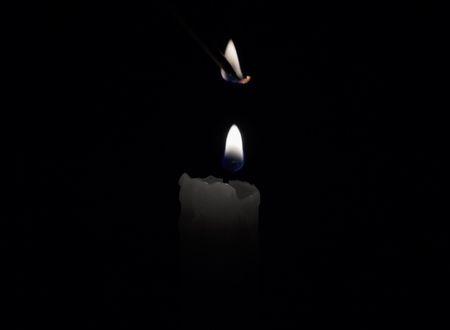Kumara looked at the rivulets of rain on the windowpanes. The aroma of wet earth blended with the smell of jasmine incense from the altar. After a humid night, the sky was crying its heart out. It helps to cry, to let out bottled-up pain. The only expression known to him was singing, and now the doctors had barred him. “It’s detrimental to your condition. Your lungs cannot bear the strain. Go, spend your days at a drier place. Clean air and surroundings will do you good. And remember, no singing at all.” The advice had a touch of finality to it. In a few years, life had taken a U-turn. Who could have predicted this day?
Kumara Gandharva — The “celestial singer” the child prodigy, a conference artist at the age of eleven.
Few singers witness such a meteoric rise on the classical music skyscape. Before turning twenty, he taught at the same school where he had once received formal musical training. People queued up for his shows.
Other than music, one more pleasurable pursuit occupied his mind. He sought solitude — a few hours alone with Bhanumati, his lady love, in the double-decker bus. When they sat on the upper deck, the wind would rush into their faces, disturbing a few errant strands of hair from Bhanumati’s bun. The time came to a standstill when they were together. A brief period had passed after their marriage when they learned about his tuberculosis. And so, they had moved to Dewas — a nondescript town in the Malwa region.
There she was now, his beloved Bhanumati, strumming the tanpura as he lay down listlessly. She had become the epitome of resilience. Sometimes, she played the tanpura for hours on end. Its soothing notes caressed Kumara’s bruised heart. All he could do was listen. Today, the sound of rain added to the melody. The constant pitter-patter was interspersed with sudden alaps of lighting. Kumar’s tired eyes rested on a dainty creeper twirling around the windowpanes, its tendrils clutched the bars like an infant grabbing an elder’s finger. A little bird hopped on the window sill, tweeting a song. The rain had stopped.

(Young Kumar Gandharva with his first wife Bhanumati)
“Open the window, Bhanu. I want to listen to them.” Every day, some sadhus came begging for alms. The one-pointed sound of ektara marked their arrival. Their songs had captured Kumar’s imagination. How fearless were these Sadhus! Dressed in ochre robes, big terracotta earrings pierced into their ears, and tattered jholas swinging from their shoulders. They had renounced everything, yet their faces shone with fulfillment. What divine source had they tapped into? Truth resonated in their intrepid notes, as they sang the words of Kabir and Gorakshnath. “Maya Maha thagini hum Jani” (Maya is the great swindler—now I know), “Avadhuta, Yugan yugan hum yogi”.(Oh unattached one, I have been a Yogi for lifetimes), “Guru ji main to ek Niranjan dhyaun ji.” (Oh master, I will meditate on the formless.)
Kumar drank in words, rustic notes, and folk tunes. The bhajans were in dialects of Hindi. Simple in appearance; profound in meaning. They peeled away ostentatious layers and revealed the bare bones of spirituality. “Where was God to be found if not in one’s own self? Wasn’t the human body an empty citadel, city, or colony? Who sleeps in this place? Who stays awake?” With each bhajan, Kumar became more reflective. Sometimes, when Bhanu wasn’t looking, he hummed silently.
By the age of twenty-three, Kumar had seen the rise of fame just as he had experienced the “bubble reputation” going kaput. Life had come to a grinding halt in Dewas. The Nath Sadhus sang the tale Kumar had lived. Centuries before him, saints and poets had given words to the spiritual churn he was experiencing. Curious, he began to collect these songs, popularly called ‘nirguni bhajans’ since they celebrate the formless.
Five years rolled on. Kumara had not sung yet, but his understanding of the nirguni bhajans had deepened. So much so that when he resumed singing (post recovery), the listeners felt that he was one with the lyrics. It was and is difficult to imagine tunes for Nirguni bhajans other than the ones composed by Kumara Gandharva.

The advent of streptomycin in tuberculosis treatment gave a lease of life to Kumara. Thanks to the medicines and his wife Bahnumati’s care, he recovered and returned to the Indian classical stage, albeit a changed man. Kumara had imbibed the essence of Nirguni Bhajans. He took the brave step of giving them center stage in Indian classical music. Some bhajans were known and anthologized in collections. Others (lesser-known ones) were popular among sadhus and minstrels in rural India. As you can imagine, the purists and pedants, both in the Music world and literary circles, were rattled. Kumara had venerated the common man’s songs and given them their rightful place.
With a newly found voice, style, and expression, Kumara was unstoppable. Tuberculosis had left a long-lasting impact on him. One of his lungs was rendered useless. Consequently, he developed a unique style of singing short phrases in his high-pitched voice. Wherever he found inspiration, he embraced it unapologetically. Kumara is remembered for his innovative and adaptive attitude to classical music. He borrowed the best from all gharanas, refusing to conform to any specific music lineage.
Having tapped into his truth, by becoming his own person, Pandit Kumara Gandharva became the ‘avadhuta’ he so passionately sang about.










Comments & Discussion
30 COMMENTS
Please login to read members' comments and participate in the discussion.